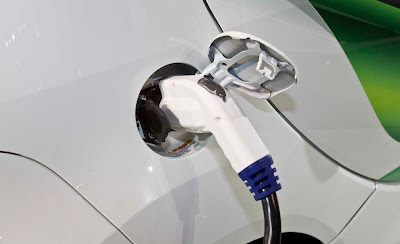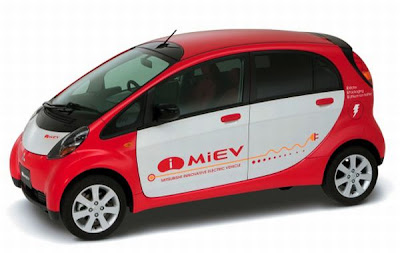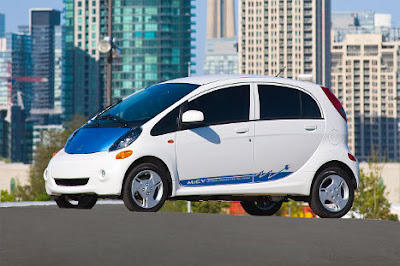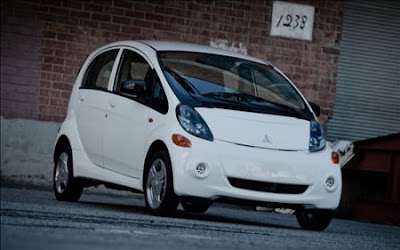Building on the company's additional than 35 years of involvement in advanced electrical vehicle development, Mitsubishi Motors has unveiled its first all-electric production vehicle bound for the North American market - the Mitsubishi i.
Based on the terribly well-liked gasoline-powered Mitsubishi i minicar within the Japanese market, this roomy and sensible four-door 2012 model is the idea for the new a hundred% battery-powered Mitsubishi i for the North American market. The zero tailpipe emission Mitsubishi i can be the primary North American production vehicle to be powered by Mitsubishi innovative Electric Vehicle (MiEV) technology - cutting edge drivetrain engineering that can function the basis for future ultra-environmentally-friendly vehicles from the corporate. Gone are conventional automotive systems including a gasoline engine, transmission and a fuel tank, having been replaced by advanced components together with a lithium-ion battery system, electric motor and an efficient battery charging system within the all-new Mitsubishi i. This electric vehicle has already proved itself a viable and reliable type of transportation as Mitsubishi has been selling the automotive in its home market since the summer of 2009; production has already commenced for the European-spec i-MiEV.
Mitsubishi anticipates an initial roll out of the Mitsubishi i to its dealership network within the western United States (specifically California, Oregon, Washington and Hawaii) in November 201one, with entry into the northeastern market to follow by March 2012 and nationwide availability by the tip of 2012. The vehicle's MSRP is predicted to be around $30,000, not including Federal and on the market state monetary incentives.
The new production Mitsubishi i sure for the North American market additional differentiates itself from its Japanese- and European-spec versions with a retooled, larger body to supply even more interior comfort for four adults, along with new North American-spec bumpers front and rear for enhanced protection within the event of a collision. Other noteworthy safety measures on the North American-spec vehicle include airbags that protect passengers and control deployment force, Active Stability Control (ASC) and a Tire Pressure Monitoring System (TPMS) - all included as standard equipment.
Easier on the Environment
Due to its extremely efficient all-electric powertrain, the Mitsubishi i produces zero on-road CO2, creating it a zero emissions vehicle. What's a lot of, when factoring within the CO2 emissions produced by the ability plants that generated the electricity that provides the energy for the Mitsubishi i, this revolutionary Mitsubishi production automotive only produces regarding 30p.c of the CO2 emitted by the 660cc gasoline engine that powers the non-electrical-version of the car in its home market. And therefore the reduction in CO2 becomes even more statistically significant considering that the 660cc gasoline engine found within the Japanese market is only concerning one-third of the displacement of the everyday four-cylinder gasoline engine powering cars in the North American market.
Further energy potency can be wrung from the "i" model's electrical powertrain due to Eco (Economy) and Brake driving modes that supplement the vehicle's commonplace Drive mode. The Eco mode limits excessive power usage from reaching the motor whereas the Brake mode increases the resistance of the regenerative braking system (particularly when driving downhill) to feed even more energy into the automobile's bank of lithium-ion batteries.
Low Cost "Fuel" Supply
The operating value per mile of the electrical-powered Mitsubishi i is significantly cheaper than that of a comparable gasoline-powered vehicle. In Japan, the operating value is solely 1/3 that of the 660cc gasoline engine-powered version of the automotive, and the operating value can drop even a lot of considerably than that of its internal-combustion sibling by making the most of reduced electricity rates by recharging throughout nighttime or off-peak hours.
Clever Design = Spacious Accommodations, Outstanding Safety
Due to the vehicle's glorious packaging and engineering in relation to its size, this uniquely styled automobile provides an wonderful level of safety, ample area for four adults and handy cargo house.
How can a tiny automobile possess such ample interior volume? Mitsubishi engineers have cleverly placed the high-capacity lithium-ion batteries beneath the ground, and the electric motor, inverter and battery charger have been located behind and below the rear passenger space. This setup additionally has the additional advantage of lowering the vehicle's center of gravity. Along with the wheels being placed at the farthest corners of the vehicle, this gives the Mitsubishi i exceptional stability along with surprisingly agile handling.
Advanced Electrical Powertrain
The power system consists of a permanent magnet synchronous electric motor and a high energy density lithium-ion battery pack that consists of 88 cells (twenty two modules, 4 battery cells per module) for a maximum battery capacity of sixteen kWh. The battery modules can be put in either transversely or vertically; this packaging flexibility allows them to be stored beneath the cabin floor. All eighty eight cells reside at intervals an extremely durable stainless-steel capsule to supply most protection.
The Mitsubishi i additionally options a groundbreaking 3-manner battery charging system that permits the vehicle to be charged using the onboard household charger through either 110V (15A) or 220V (15A) power sources or by a fast-charger system that utilizes a three-section 220V power provide. The charging times from a very low battery to fully full are approximately eight hours at 220V and 16 hours at 110V. The 3-phase 220V quick-charger can take an occasional battery all the way up to an eightyp.c battery charge in beneath a remarkably quick 30 minutes. The 3-section fast-charger makes use of a special outlet that's accessible on the driving force's side of the vehicle, whereas the onboard household charger's outlet is located on the passenger facet of the Mitsubishi i.
Strategic Research and Logistical Partners
The Mitsubishi i has undergone many years of exhaust testing and analysis not solely internally by the Japanese auto manufacturer however with several alternative institutions, as well as seven utility companies in Japan, with prototype analysis programs with major United States utilities Southern California Edison, Pacific Gas and Electric Company (PG&E), Portland General Electric and the Tennessee Valley Authority.
And in an endeavor to help expand and improve the logistical facet of the electrical vehicle ownership experience, Mitsubishi has teamed with company titans as well as consumer electronics retailer Best Buy and leading power management company Eaton Corporation. Best Buy, through its twenty,000-plus robust workers in its Geek Squad division, has partnered to provide site analysis and work to manage installation of a Level a pair of Charging Station it will sell through its stores for Mitsubishi i owners to use in their own homes. Designed and manufactured by Eaton - a company that has additional than 20 years of expertise in developing electrical and hybrid power systems for business vehicles - this 220V charging station will cut the time it takes to charge the automotive's batteries in [*fr1] in comparison to a normal 110V electrical outlet.
Mitsubishi i specifications (North American Version)
Overall length: 144.8"
Overall width: 62.4"
Overall height: 63.6"
Track
Front: 55.9"
Rear: 54.3"
Wheelbase: 100.4"
Number of passengers: 4
Vehicle weight: 2584 lbs.
Motor output: 63 hp
Motor torque: 133 lb.-ft
Battery system: 330V lithium-ion
Drive mode: Mid-engine, rear-wheel drive
Mitsubishi 2012 i-MiEV
Mitsubishi 2012 i-MiEV
Mitsubishi 2012 i-MiEV
Mitsubishi 2012 i-MiEV
Mitsubishi 2012 i-MiEV
Mitsubishi 2012 i-MiEV
Mitsubishi 2012 i-MiEV
Mitsubishi 2012 i-MiEV
Mitsubishi 2012 i-MiEV








No comments:
Post a Comment